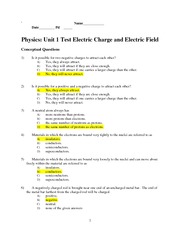Anticipation Guide Holt Physics

Chapter 15 and 16 Study Guide Answers. Copyright © by Holt, Rinehart and Winston. All rights reserved. Modern Biology Study Guide Answer Key. Additions and changes to the original content are the responsibility of the instructor. Holt Physics. Motion In One Dimension. Section Study Guide.


ISBN: 694 / Author: Jerry S. Faughn Serway Table of Contents go to page page Chapter 1 The Science Of Physics 1-1 What is Physics? Report this ad CHEAT SHEET SLADER FASTER evens odds evens odds BEAMING IN YOUR CHEAT SHEET JUST A SEC Can you find your fundamental truth using Slader as a completely free Holt McDougal Physics solutions manual? Now is the time to redefine your true self using Slader’s free Holt McDougal Physics answers. Shed the societal and cultural narratives holding you back and let free step-by-step Holt McDougal Physics textbook solutions reorient your old paradigms. NOW is the time to make today the first day of the rest of your life. Unlock your Holt McDougal Physics PDF (Profound Dynamic Fulfillment) today.
YOU are the protagonist of your own life. Let Slader cultivate you that you are meant to be!
Holt Physics Pdf
How to Use 1. Construct Write four to six short, declarative, thought-provoking statements about the new concept, some true and some false. Include two sets of columns before and after the statement. One column should be labeled “Agree” and the other “Disagree” (see template). Display Read or display the statements to the class.
Allow students time to respond to each statement, either individually, with a partner, or as a class. They should use the columns to the left of each statement to mark whether they agree or disagree. Discuss Conduct a short class discussion about the statements before presenting the new material. Ask students to explain why they agree or disagree. Revisit Revisit the guide after presenting the new material and have students use the columns to the right of each statement to mark whether they now agree or disagree based on what they’ve learned. Have students compare their changes with a partner.
If their responses are not the same, ask them to see if they can convince their partner to change. When to Use Use an Anticipation Guide to structure meaningful conversation that reviews what students already know and engages them in critical thinking about the topic they will be exploring. You can use an Anticipation Guide:.
Before/after introducing new material to tap into prior knowledge. Before/after watching a film clip to gauge a reaction. Before/after reading a short text to begin a discussion Variations Anticipation Guide + Why Add an extra “why” column to get students to support their answers and explain their decision making process after they make their final decisions.
Anticipation Guide + Character POV To help students understand point of view (POV), you can use an anticipation guide where students write down how they feel about the statements. Then, after they read the story, they write down how a specific character feels about the same statements.